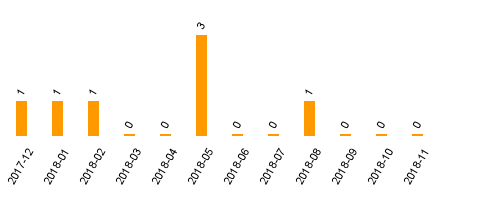Pathways of transnational activism : a conceptual framework
Zajak, SabrinaDownload:
pdf-Format: Dokument 1.pdf (2.428 KB)
| URL | https://edoc.vifapol.de/opus/volltexte/2015/5632/ |
|---|---|
| Dokumentart: | Bericht / Forschungsbericht / Abhandlung |
| Institut: | MPIfG - Max-Planck-Institut für Gesellschaftsforschung |
| Schriftenreihe: | MPIFG discussion paper |
| Bandnummer: | 2014, 5 |
| Sprache: | Deutsch |
| Erstellungsjahr: | 2014 |
| Publikationsdatum: | 09.03.2015 |
| Originalveröffentlichung: | http://www.mpifg.de/pu/mpifg_dp/dp14-5.pdf (2014) |
| SWD-Schlagwörter: | Global Governance , Aktivismus , Politologie |
| DDC-Sachgruppe: | Politik |
| BK - Basisklassifikation: | 89.00 (), 89.71 (Internationale Zusammenarbeit: Allgemeines), 89.70 (Internationale Beziehungen: Allgemeines) |
| Sondersammelgebiete: | 3.6 Politik und Friedensforschung |
Kurzfassung auf Englisch:
This paper presents a novel analytical framework to study transnational activism in the context of today's international governance architecture. While there is a considerable amount of literature on the emergence, development, and effects of transnational activism in specific transnational governance arrangements or within a specific local context, an integrated framework that analyzes the dynamic interplay between activism, transnational institutions, and domestic contexts is still lacking. The framework of transnational pathways of influence intends to help close this gap. It integrates insights from social movement research on transnational collective action and insights from institutional theorists on institutional interactions. The framework consists of three major concepts: the concept of intra-pathway dynamics captures the relationship of mobilization and institutional chance within one path; the concept of inter-pathway dynamics encompasses institutional interactions and interdependencies between activism across paths; and the concept of the global–local link characterizes the relationship of activism within each path to local actors, the domestic context, and the political regime. The paper outlines this framework and exemplifies it by taking the case of transnational labor-rights activism targeting labor-rights violations in a strong and nondemocratic state: the People's Republic of China. It shows that the study of activism across different transnational pathways over time is necessary to understand the combined effects of activist interventions, institutional co-evolution and interaction as an explanation of the process of selective convergence between global norms and local practices.
Kurzfassung auf Deutsch:
Der Beitrag präsentiert einen neuen Ansatz zur Analyse transnationalen Mehrebenenaktivismus in der globalen Governance-Architektur. Der besondere Fokus liegt auf dem Zusammenspiel zwischen Aktivisten, multiplen transnationalen Institutionen und dem lokalen Kontext. Kern des Analyserahmens bilden drei Konzepte: Intra-Pfad-Entwicklungen beschreiben die Interaktion zwischen Mobilisierung und institutionellem Wandel innerhalb eines Pfades; Inter-Pfad-Dynamiken umfassen institutionelle Interaktionen und Interdependenzen zwischen Aktivismus in verschiedenen Pfaden; und der global- lokale Link erklärt das Verhältnis von Aktivisten in den einzelnen Pfaden zu lokalen Akteuren, dem lokalen Kontext und dem politischen Regime. Der Analyserahmen wird anhand des Beispiels von transnationalem Arbeitsrechtsaktivismus, der gegen schlechte Arbeitsbedingungen in chinesischen Lieferbetrieben mobilisiert, erörtert. Es zeigt sich, dass die Analyse von transnationalem Aktivismus entlang verschiedener Pfade und im Zeitverlauf nötig ist, um die Wirkung des Zusammenspiels verschiedener Effekte – transnationale Interventionen, institutionelle Ko-Evolution und Interaktion – zu verstehen: Nur in ihrem Wechselspiel führen diese Prozesse zu einer selektiven Konvergenz zwischen globalen Normen, nationalen Rechten und lokalen Praktiken.
Für Dokumente, die in elektronischer Form über Datenenetze angeboten werden, gilt uneingeschränkt das Urheberrechtsgesetz (UrhG). Insbesondere gilt:
Einzelne Vervielfältigungen, z.B. Kopien und Ausdrucke, dürfen nur zum privaten und sonstigen eigenen Gebrauch angefertigt werden (Paragraph 53 Urheberrecht). Die Herstellung und Verbreitung von weiteren Reproduktionen ist nur mit ausdrücklicher Genehmigung des Urhebers gestattet.
Der Benutzer ist für die Einhaltung der Rechtsvorschriften selbst verantwortlich und kann bei Mißbrauch haftbar gemacht werden.
Zugriffsstatistik
(Anzahl Downloads)


